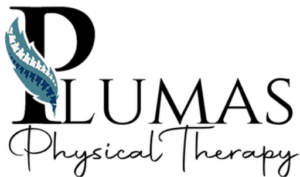Living With Arthritis Pain? Physical Therapy Can Ease Your Discomfort.

Arthritis Pains Don’t Need to Slow You Down Any Longer!
If you have arthritis, you are well aware of the problems it adds to everyday activities such as traveling and working. What you may not realize is that physical therapy will help you get relief from arthritis pain!
There is no treatment for arthritis, but by following the treatments and procedures that your physical therapist will show you, you can delay the onset of arthritis and feel less discomfort overall.
You have the choice for a safer, more effective path toward arthritis pain management: physical therapy. Call our office and schedule a physical therapy appointment today.
How can physical therapy help my arthritis pain?
Physical therapy appointments are often relatively short. Your doctor will concentrate on detecting issues with your physical activity that are due to arthritis and showing you pain-relieving techniques that you can do at home.
Maintaining long-term compliance with the teachings is the only way to obtain long-term pain relief from arthritis. Since the recovery would be slow, it is important that you obey your physical therapist’s orders.
Consider your physical goals carefully in order to assist the physical trainer in providing you with the best guidance possible.
For example, you might like to be able to do your everyday job without straining your hips or knees, reach items high up on a kitchen shelf without straining your back, or just get in and out of your car without discomfort. Expressing your desires through your therapist will help you ensure that your services are as targeted as possible.
Your physical therapy sessions probably won’t need to be done on a weekly basis. Once every few weeks monitoring your condition and progress should be sufficient.
Kinds of Arthritis
Arthritis includes an entire family of painful joint conditions. For some individuals, it may take the form of painful gout in a toe joint; in others, it can strike due to a bacterial joint infection. The majority of arthritis sufferers, however, suffer from one of two agonizing conditions:
- Rheumatoid arthritis – This form of arthritis is caused by an auto-immune disease or dysfunction. The same protective mechanisms that normally fight off disease germs decide to turn on your joints, treating them as the enemy and attacking them. This results in painful inflammation that may come and go, leaving joint swelling and deformity in its wake.
- Osteoarthritis – This is the most prevalent form of arthritis, and it is typically the result of a history of joint motion combined with any modifications that occur as people age. Healthy joints have a lubricating fluid to keep the bone ends running smoothly, as well as a layer of cartilage that serves as a shock absorber and anti-friction part.
However, the production of lubricating fluid may begin to dry up with time, as the cartilage becomes thinner and more aged, eventually breaking down entirely. This causes discomfort, swelling, and inflammation, which normally worsens as you step or place weight on the joint.
Benefits of physical therapy for your body
Arthritis affects the body’s joints, so physical therapy can focus on restoring joint function and improving the ability to walk about and participate in everyday tasks.
This can be accomplished by combining movement to reinforce the support muscles around the joints with instruction on how to walk and participate in tasks without aggravating the symptoms. Your physical therapist will recommend a recovery plan based on how advanced your arthritis is and which areas of your body are affected.
The physical exercises your therapist will teach you will be directed toward improving your mobility, range of motion, flexibility, and coordination. Your plan may include any combination of:
- Treatments: Modern physical therapy has a broad range of treatment options available to assist with arthritis pain. Hot and cold therapy can relieve the pain and stiffness in joints; braces or splints can help to stabilize and support arthritic joints; shoe inserts can relieve arthritis pain in the lower extremities; and so on.
- Environmental modifications: Your physical therapist can make specific recommendations for additional therapeutic aids based on your type of arthritis. These can include ergonomic furniture or cushioned mats in areas of your home or at work where you tend to stand on your feet for long periods of time.
- Education: Sometimes arthritis in the hip or knee will require the use of assistive mobility devices, such as a cane or walker. Your physical therapist will teach you the proper way to use these devices.
- Posture: Your therapist will teach you various body mechanic techniques that will improve joint function and reduce pain. You will also be taught ways to use your strongest muscles and joints to relieve pressure on arthritic joints.
Call our clinic today to get started
If you are ready for relief from arthritis pain, call our office to schedule your first appointment with a physical therapist. We’re here to help you and get you on the best path towards feeling better and living a more fulfilling life.
Sources:
- Environmental Modifications Services (E-mods)https://www.health.ny.gov › nhtd_manual › section_06
- Rheumatoid Arthritis | Health Topics | NIAMS – National …https://www.niams.nih.gov › Health Topics
